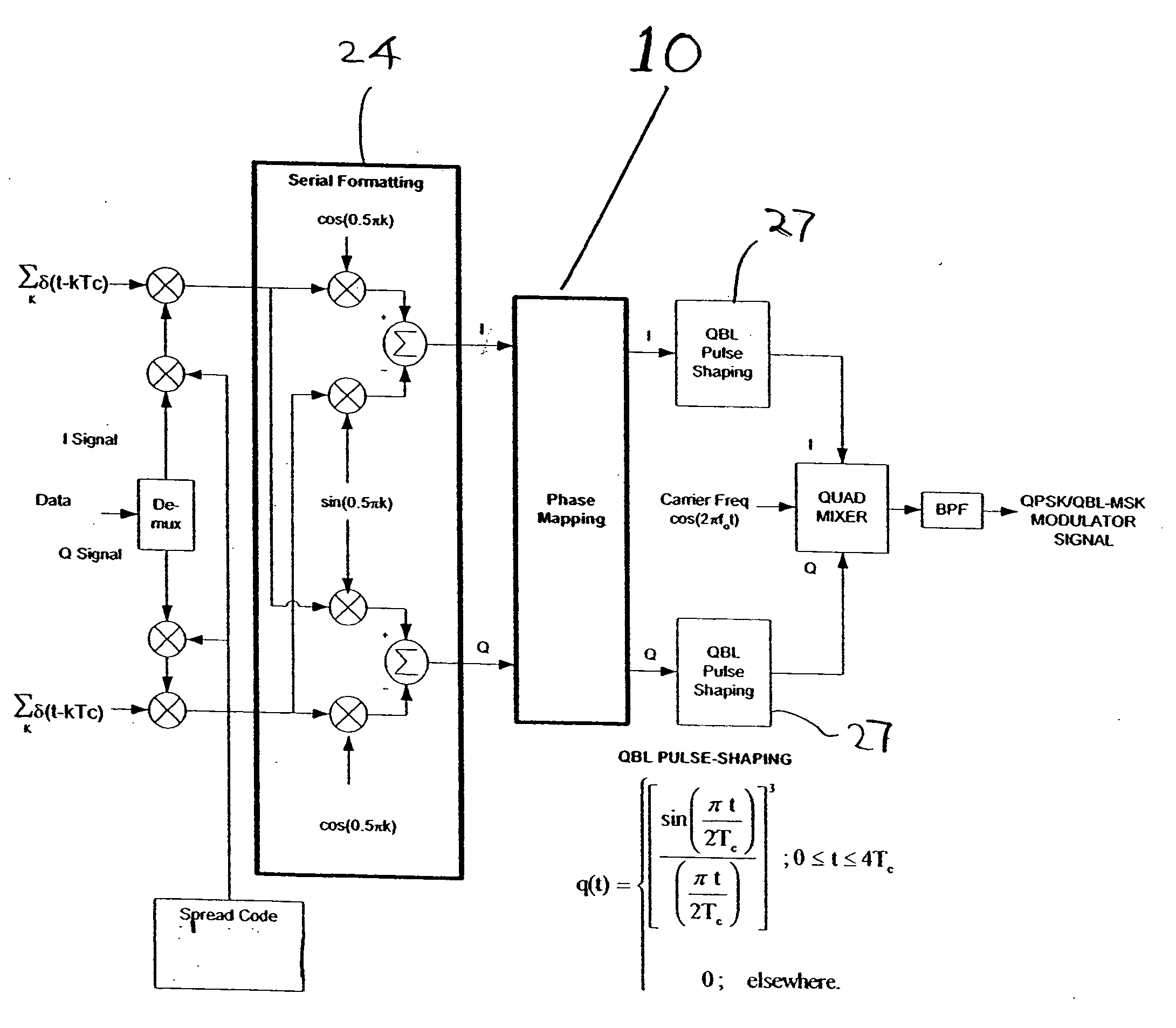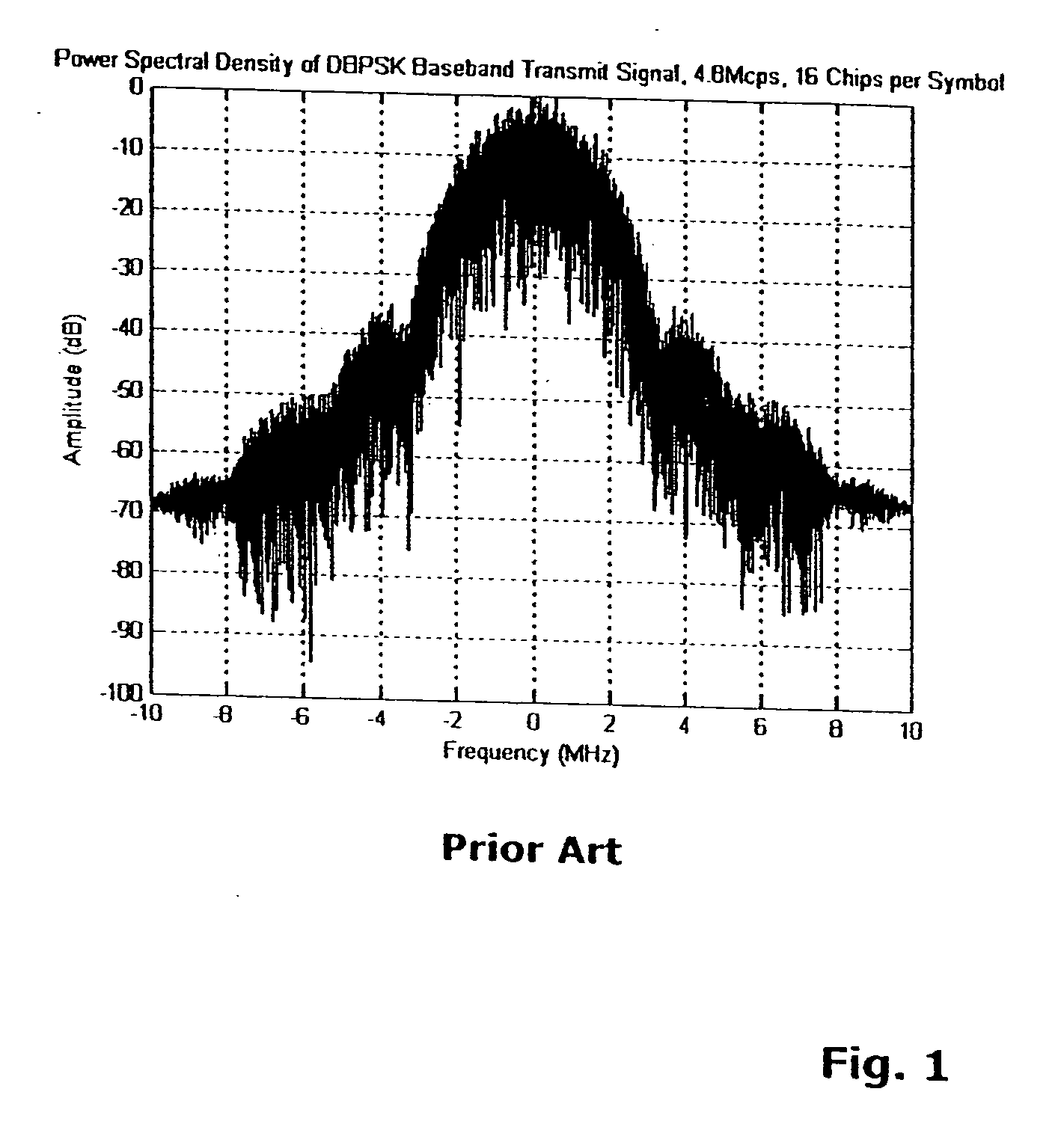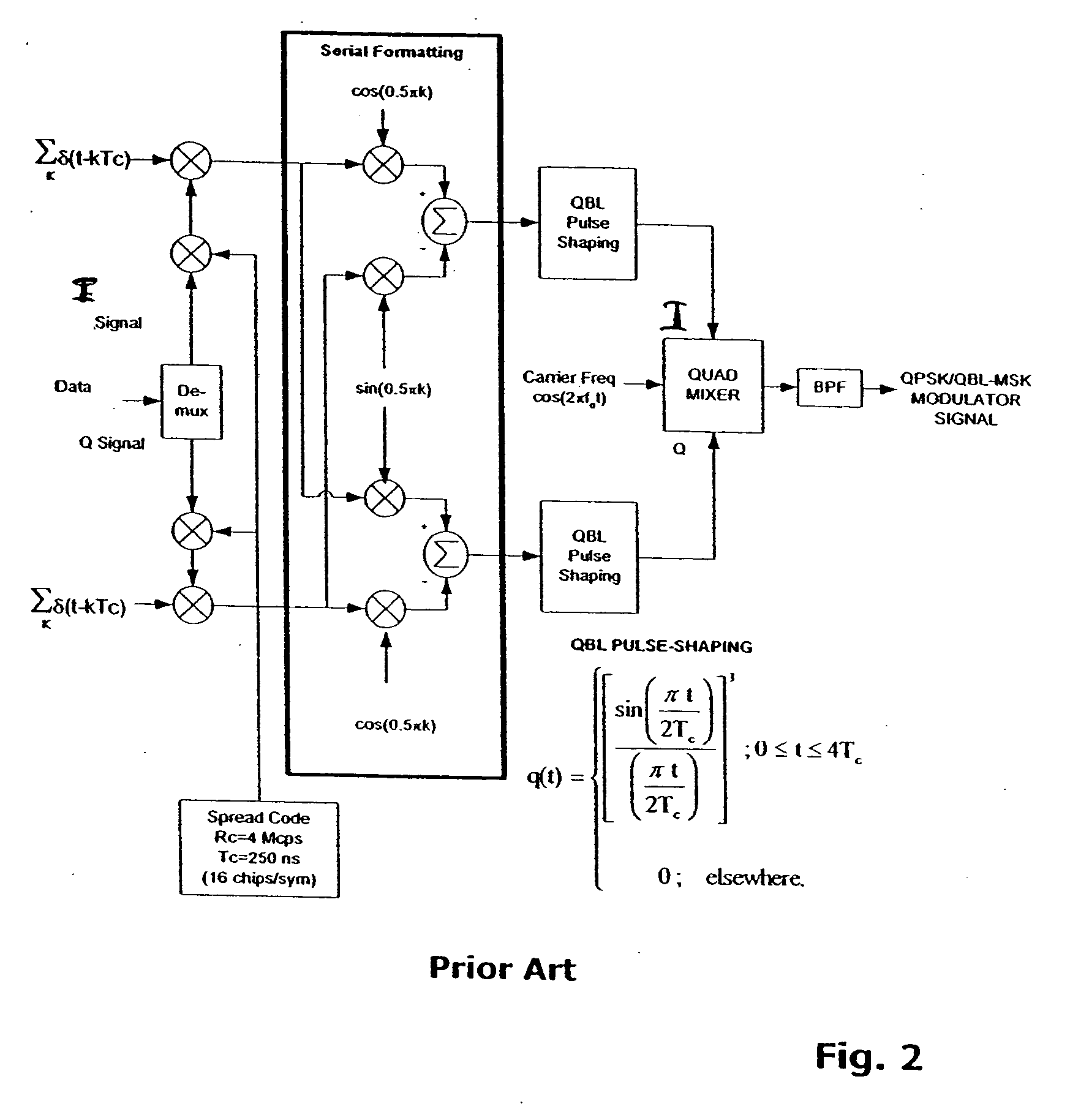Phase mapping for QPSK/QBL-MSK waveform
a phase mapping and waveform technology, applied in the field of communication, can solve the problems of reducing the spectral efficiency of the regrowth process, reducing the processing gain degradation and the complexity of the table lookup, and reducing the complexity of the processing gain degradation and the table lookup
- Summary
- Abstract
- Description
- Claims
- Application Information
AI Technical Summary
Benefits of technology
Problems solved by technology
Method used
Image
Examples
Embodiment Construction
[0044] The phase mapping of the present invention requires four signal states in the QBL-MSK modulator. FIG. 8 shows two unique conditions for the I signal, over time interval 0 to 2TC, where TC is the chip period. FIG. 8 also shows the chip pulses that make up the two unique signal conditions. From these two conditions the four possible I signals can be generated by either inverting or not-inverting one of the two signal conditions. Since the Q signal is a time shift version of the I signal, by a chip period, with the Q data and Q chips multiplying the chip pulses, the same approach can be used to generate four possible Q signals within each chip period. This approach allows use of a look-up table (LUT) to implement the mapping performed by the present invention. For BPSK data modulation, the signal structure does not change with the data modulation. For QPSK data modulation with phase mapping, the signal structure, at the symbol boundaries, is affected by the data modulation when ...
PUM
 Login to View More
Login to View More Abstract
Description
Claims
Application Information
 Login to View More
Login to View More - R&D
- Intellectual Property
- Life Sciences
- Materials
- Tech Scout
- Unparalleled Data Quality
- Higher Quality Content
- 60% Fewer Hallucinations
Browse by: Latest US Patents, China's latest patents, Technical Efficacy Thesaurus, Application Domain, Technology Topic, Popular Technical Reports.
© 2025 PatSnap. All rights reserved.Legal|Privacy policy|Modern Slavery Act Transparency Statement|Sitemap|About US| Contact US: help@patsnap.com



